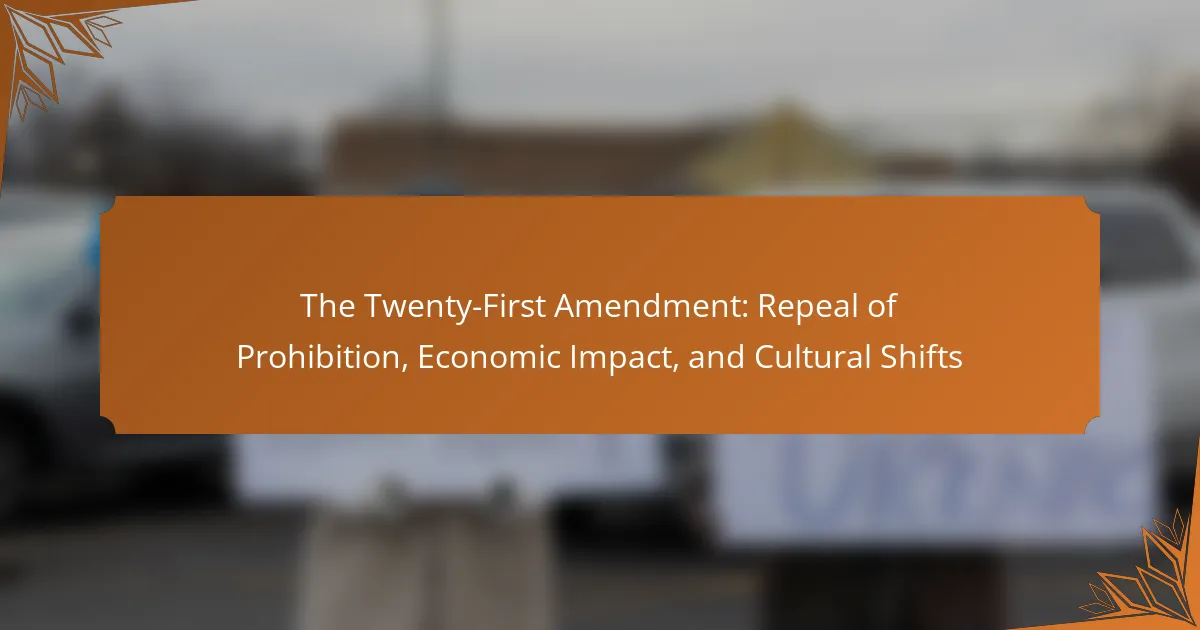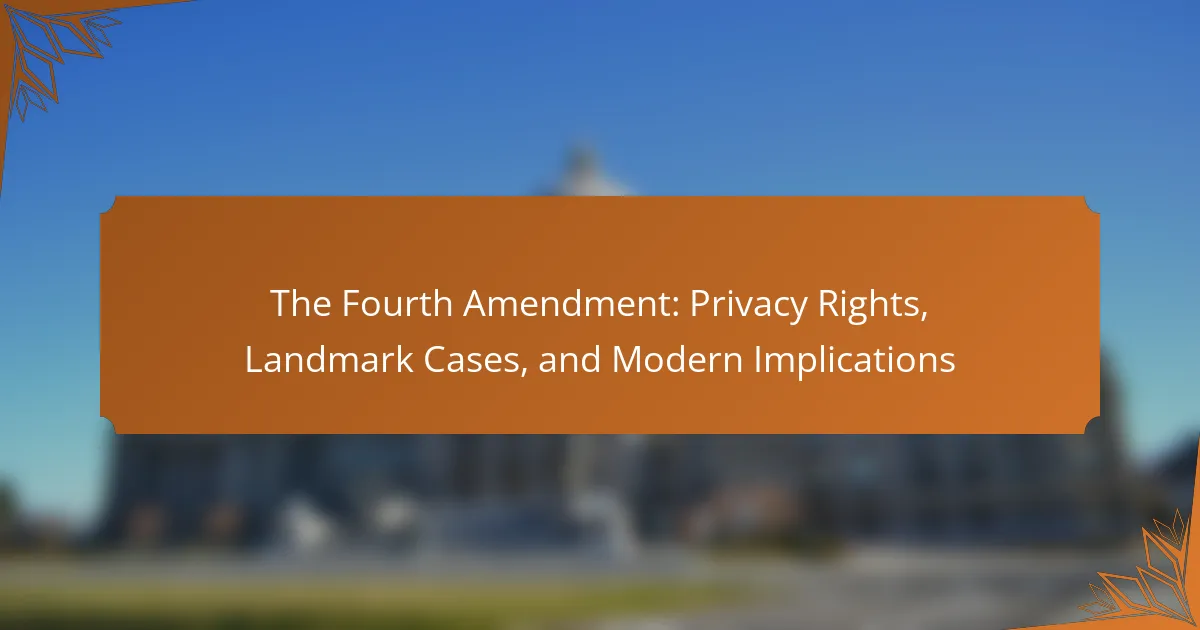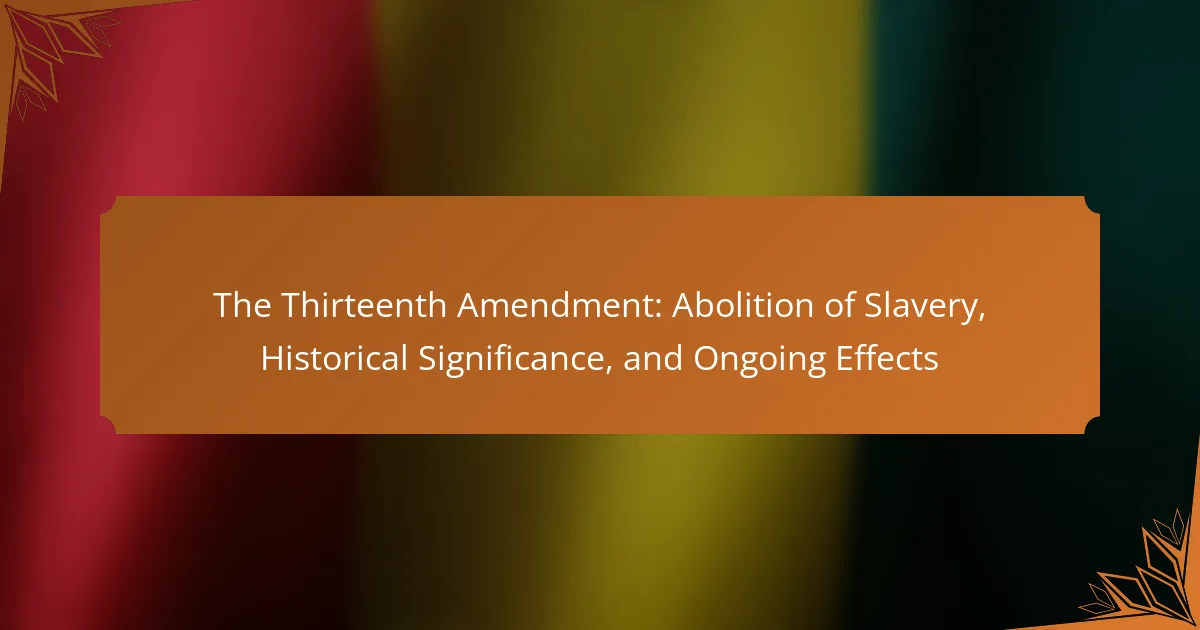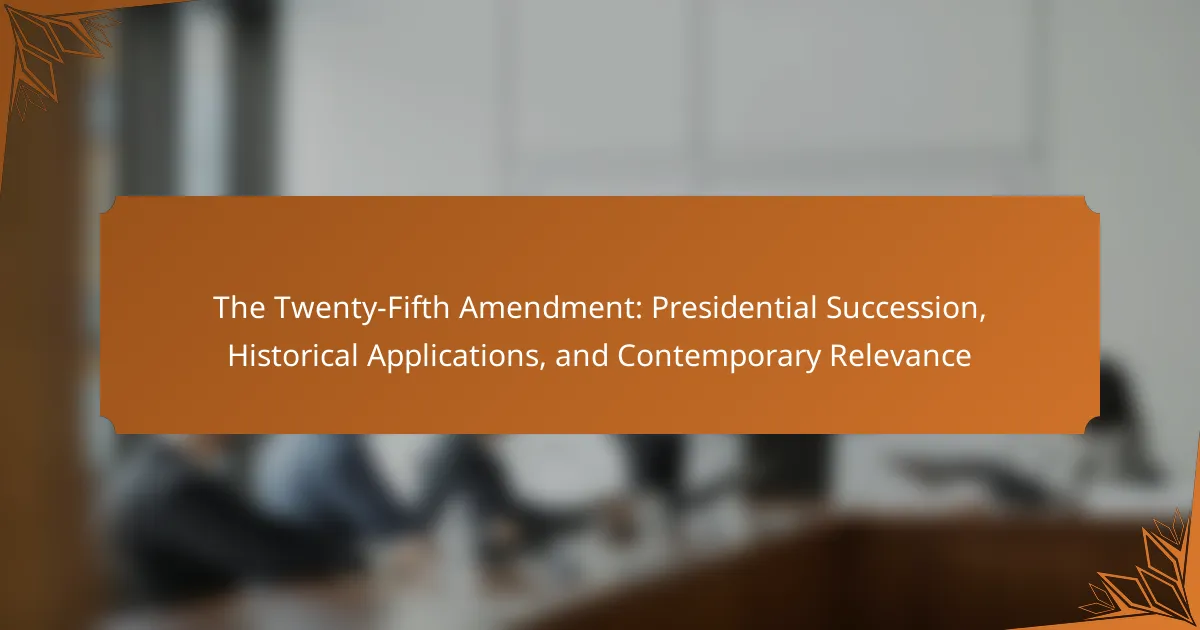The Twenty-First Amendment to the United States Constitution, ratified on December 5, 1933, repealed Prohibition established by the Eighteenth Amendment, allowing states to regulate the importation and distribution of alcoholic beverages. This repeal addressed the negative economic and social consequences of Prohibition, leading to significant growth in the alcohol industry and increased government revenue from alcohol taxes. The amendment also facilitated cultural shifts in American society, promoting more permissive attitudes towards drinking and contributing to the emergence of new social venues, entertainment industries, and changing gender roles. Overall, the Twenty-First Amendment had a profound impact on both the economy and the cultural landscape of the United States.
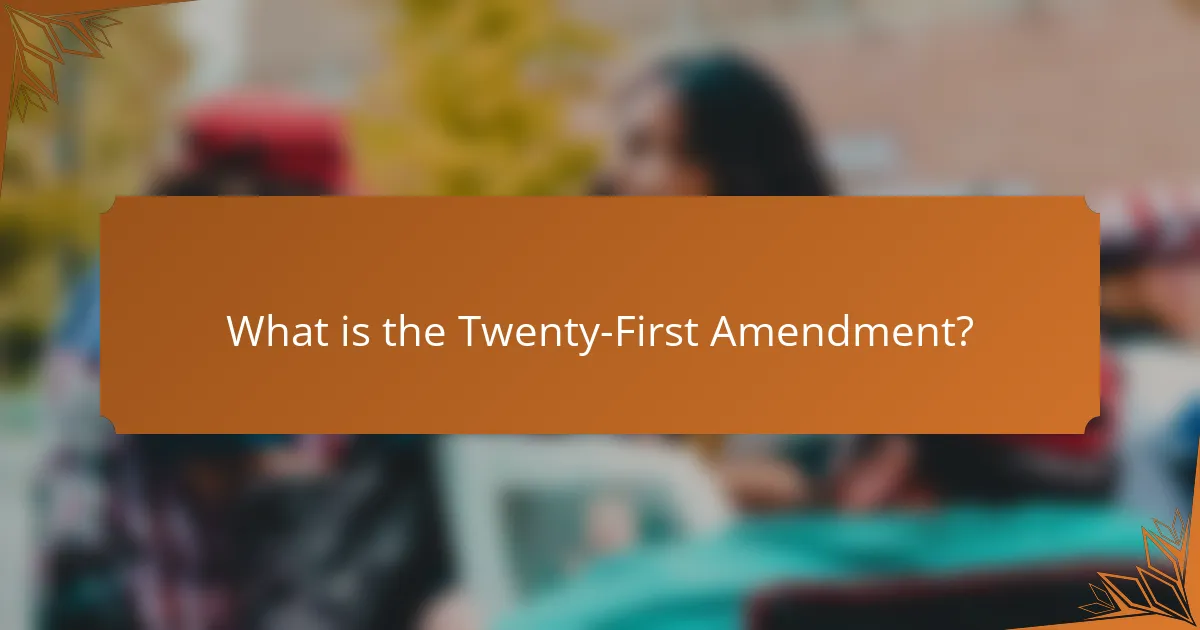
What is the Twenty-First Amendment?
The Twenty-First Amendment to the United States Constitution repealed Prohibition. Ratified on December 5, 1933, it ended the nationwide ban on alcohol that was established by the Eighteenth Amendment. The amendment allows states to regulate the importation and distribution of alcoholic beverages. It was a response to the negative economic and social effects of Prohibition. The amendment marked a significant cultural shift in American society. Its passage highlighted the demand for the legal sale of alcohol. The Twenty-First Amendment is the only constitutional amendment that repeals another amendment.
Why was the Twenty-First Amendment enacted?
The Twenty-First Amendment was enacted to repeal the Eighteenth Amendment, which established Prohibition in the United States. Prohibition led to widespread illegal activities, including bootlegging and organized crime. The amendment aimed to restore legal alcohol sales and regulate consumption. Economic factors also influenced its enactment. The Great Depression created a need for increased tax revenue from alcohol sales. Additionally, public sentiment shifted towards the acceptance of alcohol. The amendment was ratified on December 5, 1933, marking the end of Prohibition.
What historical context led to the repeal of Prohibition?
The historical context that led to the repeal of Prohibition includes economic, social, and political factors. The Great Depression in the 1930s created significant economic hardship. This prompted calls for the government to generate revenue through taxation of alcohol. Socially, the rise of organized crime during Prohibition highlighted the law’s failure to eliminate alcohol consumption. Public sentiment shifted as many Americans began to view Prohibition as ineffective and detrimental. The political landscape also changed, with the Democratic Party supporting repeal in their 1932 platform. These combined factors culminated in the passage of the Twenty-First Amendment in 1933, effectively ending Prohibition.
How did public sentiment influence the amendment’s passage?
Public sentiment significantly influenced the passage of the Twenty-First Amendment. Growing dissatisfaction with Prohibition emerged in the 1930s. Many citizens viewed Prohibition as a failure that led to increased crime and illegal activities. The economic hardships of the Great Depression intensified calls for the repeal of Prohibition. People believed that legalizing alcohol would stimulate the economy and create jobs. Polls indicated a shift in public opinion favoring repeal. This shift pressured lawmakers to act in accordance with the electorate’s desires. Ultimately, the widespread support for repeal contributed to the amendment’s successful passage in 1933.
What are the key provisions of the Twenty-First Amendment?
The key provisions of the Twenty-First Amendment are the repeal of the Eighteenth Amendment and the prohibition of the states from interfering with the importation or transportation of alcoholic beverages. This amendment was ratified on December 5, 1933. It effectively ended Prohibition in the United States. The Twenty-First Amendment allows for the legal production, sale, and consumption of alcohol. It also grants states the authority to regulate alcohol within their borders. This amendment marked a significant shift in American social and economic policy. The repeal of Prohibition had widespread implications for the economy and culture of the United States.
How does the amendment define the repeal of Prohibition?
The Twenty-First Amendment defines the repeal of Prohibition by explicitly nullifying the Eighteenth Amendment. It states that the manufacture, sale, and transportation of intoxicating liquors are no longer prohibited. The amendment was ratified on December 5, 1933. This marked the end of the nationwide ban on alcohol that began in 1920. The repeal was a response to the negative social and economic effects of Prohibition. It allowed for the regulation and taxation of alcoholic beverages. This change significantly impacted the economy and culture of the United States.
What restrictions or regulations does the amendment impose?
The Twenty-First Amendment imposes regulations on the manufacture and sale of alcoholic beverages. It grants states the authority to regulate alcohol within their borders. States can set their own laws regarding the distribution and consumption of alcohol. The amendment effectively repealed the Eighteenth Amendment, which had established Prohibition. This change allowed for the legal sale of alcohol, but with state oversight. Each state can impose restrictions, such as age limits and licensing requirements for sellers. The amendment also allows states to prohibit alcohol sales entirely if they choose. Overall, the amendment restored legal alcohol sales while giving states control over regulation.
What impact did the Twenty-First Amendment have on society?
The Twenty-First Amendment repealed Prohibition, significantly impacting American society. It allowed the legal sale and consumption of alcohol. This change led to a resurgence in the alcohol industry. Economic growth occurred as breweries, distilleries, and bars reopened. Tax revenues increased from alcohol sales, benefiting government finances. Socially, the amendment reduced illegal bootlegging and organized crime associated with Prohibition. Cultural attitudes toward drinking became more permissive. Overall, the amendment marked a shift towards individual freedom in lifestyle choices.
How did the repeal of Prohibition affect alcohol consumption patterns?
The repeal of Prohibition significantly increased alcohol consumption patterns in the United States. After the Twenty-First Amendment was ratified in 1933, legal access to alcohol resumed. This led to a surge in both production and sales of alcoholic beverages. Statistics show that per capita alcohol consumption rose dramatically, nearly doubling within a few years. Bars and restaurants began to thrive again, contributing to economic recovery. The social acceptance of drinking also changed, as alcohol became a central part of social gatherings. Overall, the repeal transformed drinking from a clandestine activity to a normalized part of American culture.
What social changes accompanied the enactment of the amendment?
The enactment of the Twenty-First Amendment led to significant social changes in American society. It marked the end of Prohibition, allowing the legal sale and consumption of alcohol. This shift resulted in the resurgence of bars and breweries, which became social hubs. Alcohol consumption patterns changed, with increased public acceptance of drinking. The amendment also influenced cultural expressions, including music and literature. Social gatherings centered around alcohol became more common. Additionally, the repeal helped reduce organized crime associated with illegal alcohol trade. Overall, the amendment transformed social norms regarding alcohol in the United States.
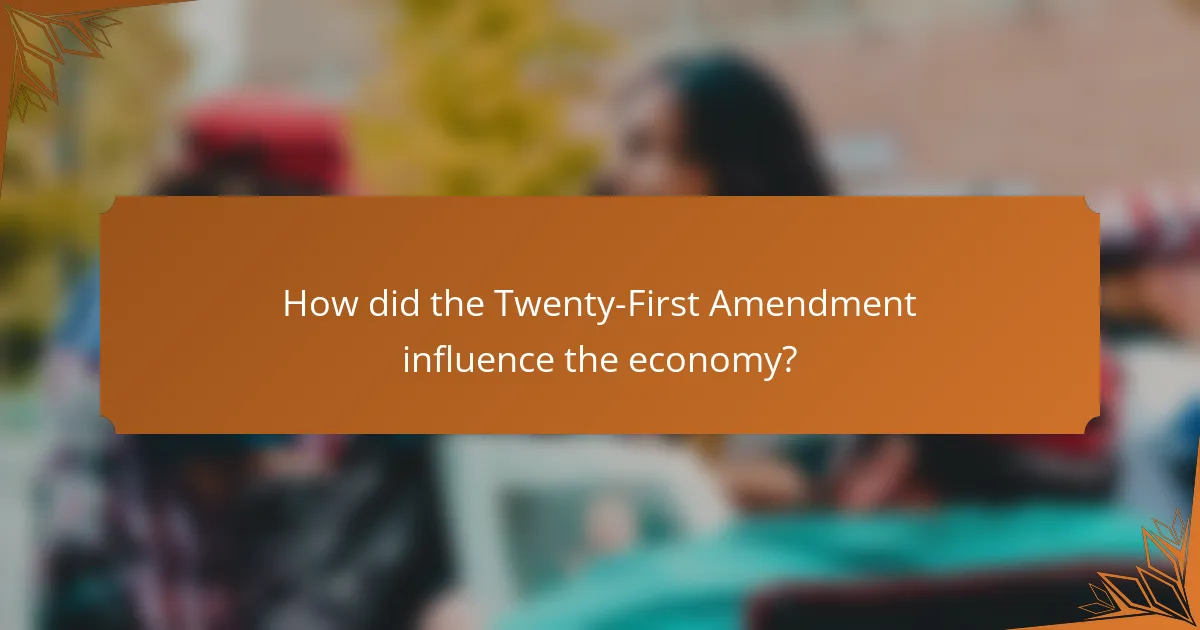
How did the Twenty-First Amendment influence the economy?
The Twenty-First Amendment influenced the economy by repealing Prohibition. This repeal allowed the legal sale of alcoholic beverages. As a result, the alcohol industry experienced significant growth. Revenue from alcohol taxes increased government funds. The amendment also boosted employment in breweries, distilleries, and bars. Additionally, it stimulated related sectors like agriculture and transportation. Historical data shows that alcohol sales contributed billions to the economy post-repeal. Thus, the Twenty-First Amendment had a profound positive economic impact.
What economic benefits arose from the repeal of Prohibition?
The repeal of Prohibition led to significant economic benefits. First, it generated substantial tax revenue for the government. The federal government imposed excise taxes on alcohol, contributing millions of dollars annually. Second, it revitalized the brewing and distilling industries. These industries created thousands of jobs, boosting employment rates. Third, the hospitality sector experienced growth. Bars, restaurants, and clubs flourished, enhancing local economies. Additionally, the repeal reduced illegal activities linked to bootlegging. This shift allowed law enforcement to focus on other crimes. Overall, the repeal of Prohibition stimulated economic recovery during the Great Depression. Historical data shows a marked increase in economic activity post-repeal.
How did the amendment affect the alcohol industry and employment rates?
The Twenty-First Amendment ended Prohibition, significantly impacting the alcohol industry. It allowed the legal production and sale of alcoholic beverages. This legalization led to a resurgence of breweries, distilleries, and bars. Employment rates in these sectors increased as businesses reopened and expanded. The amendment created thousands of jobs in manufacturing, distribution, and retail. By 1935, the alcohol industry contributed approximately $3 billion to the economy. This economic boost helped reduce unemployment during the Great Depression. Overall, the amendment revitalized the alcohol industry and positively influenced employment rates.
What role did taxation play in the economic impact of the amendment?
Taxation played a significant role in the economic impact of the Twenty-First Amendment. The amendment repealed Prohibition, allowing for the legal sale of alcoholic beverages. This led to the implementation of alcohol taxes, which generated substantial revenue for federal and state governments. In 1934, the federal government collected approximately $200 million in alcohol taxes. This influx of tax revenue helped alleviate some economic challenges during the Great Depression. Additionally, the legal alcohol industry created jobs and stimulated related sectors, such as agriculture and transportation. Overall, taxation from the alcohol industry contributed positively to the economy following the repeal of Prohibition.
How did the Twenty-First Amendment shape state economies?
The Twenty-First Amendment significantly shaped state economies by allowing the legal sale of alcohol. This repeal of Prohibition led to increased tax revenues for states. States could impose taxes on alcohol sales, boosting their budgets. Employment opportunities in the brewing and distilling industries expanded rapidly. The hospitality sector, including bars and restaurants, experienced growth. This economic activity contributed to local economies and job creation. By 1935, states collected millions in alcohol taxes, aiding economic recovery during the Great Depression. Overall, the amendment revitalized various sectors and increased state revenues.
What variations in state laws emerged post-amendment?
Post-amendment, variations in state laws regarding alcohol emerged significantly. States had the authority to regulate the sale and distribution of alcohol. Some states opted for stricter regulations, including limiting sales hours and requiring licenses for retailers. Others embraced more liberal policies, allowing for greater access to alcohol. For example, states like California and New York established extensive distribution networks. Conversely, states such as Utah maintained stricter controls, including lower alcohol content limits in beverages. These differences reflect the diverse cultural attitudes toward alcohol across the country. The variations in state laws also led to a patchwork of regulations that influenced local economies and social norms.
How did local economies adapt to the changes brought by the amendment?
Local economies adapted to the changes brought by the Twenty-First Amendment by revitalizing the alcohol industry. The repeal of Prohibition led to the reopening of breweries, distilleries, and bars. This generated employment opportunities in various sectors. Increased tax revenue from alcohol sales boosted local government budgets. Communities experienced growth in tourism as establishments attracted visitors. The hospitality industry expanded, leading to more jobs in restaurants and hotels. Overall, local economies benefited from increased consumer spending and economic activity.
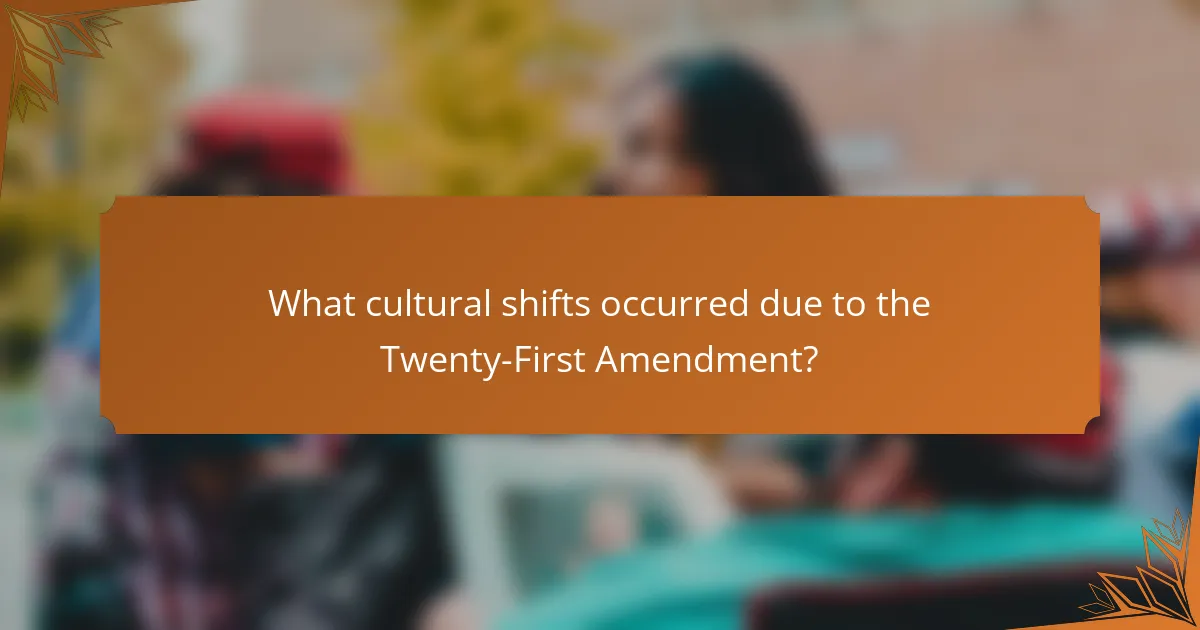
What cultural shifts occurred due to the Twenty-First Amendment?
The Twenty-First Amendment repealed Prohibition, leading to significant cultural shifts in American society. It restored the legal production and sale of alcoholic beverages. Social attitudes towards drinking became more permissive. Public drinking in bars and restaurants became commonplace. The amendment also sparked the rise of new social venues and entertainment industries. This period saw the emergence of jazz clubs and speakeasies evolving into legitimate businesses. Additionally, the repeal contributed to changing gender roles, as women increasingly participated in social drinking. Overall, the Twenty-First Amendment marked a shift towards a more open and celebratory culture regarding alcohol consumption.
How did the repeal of Prohibition change American culture?
The repeal of Prohibition in 1933 significantly altered American culture. It reintroduced legal alcohol consumption, leading to the establishment of bars and nightclubs. Social interactions became more vibrant as people gathered in public spaces to drink. The repeal also stimulated the economy by creating jobs in the brewing and distilling industries. Additionally, it shifted societal attitudes towards alcohol, normalizing its consumption. The cultural landscape saw the rise of jazz and other music genres in nightlife settings. Overall, the repeal marked a transition towards a more open and celebratory social environment.
What influence did the amendment have on social gatherings and nightlife?
The Twenty-First Amendment significantly revitalized social gatherings and nightlife in the United States. By repealing Prohibition in 1933, it allowed the legal sale and consumption of alcohol. This change led to the reopening of bars, restaurants, and nightclubs that had been closed or operating underground. Social gatherings became more vibrant as people could enjoy drinks in public spaces again. The amendment fostered a cultural shift towards a more relaxed attitude regarding alcohol consumption. Economic activity in the hospitality industry surged, creating jobs and increasing tax revenue. Historical evidence shows that cities experienced a nightlife renaissance, with jazz clubs and dance halls flourishing. Overall, the amendment transformed social dynamics and contributed to a lively cultural landscape.
How did media representation of alcohol change after the amendment?
Media representation of alcohol shifted significantly after the Twenty-First Amendment. The repeal of Prohibition in 1933 allowed for the legal production and sale of alcoholic beverages. This change led to a more positive portrayal of alcohol in films, advertisements, and literature. Prior to the amendment, media often depicted alcohol as a dangerous substance linked to crime and moral decay. Post-amendment, the narrative began to focus on social enjoyment and sophistication associated with drinking. Advertisements highlighted the lifestyle and pleasure of consuming alcohol, targeting a broader audience. Films began to include scenes of social drinking without negative consequences. This transformation reflected a societal acceptance of alcohol as a normal part of social life.
What long-term cultural effects can be traced back to the Twenty-First Amendment?
The long-term cultural effects traced back to the Twenty-First Amendment include the normalization of alcohol consumption in American society. This amendment, ratified in 1933, ended Prohibition, allowing legal sales of alcohol. The repeal shifted social attitudes towards drinking, making it more socially acceptable. Alcohol became a central part of social gatherings and celebrations. The amendment also contributed to the rise of bars and nightclubs, changing nightlife culture. Furthermore, it influenced the entertainment industry, leading to the portrayal of drinking in films and music. Overall, the Twenty-First Amendment significantly shaped modern American cultural practices surrounding alcohol.
How has the perception of alcohol evolved in American society since the amendment?
The perception of alcohol in American society has shifted significantly since the Twenty-First Amendment was ratified in 1933. The repeal of Prohibition marked a return to legal alcohol consumption, which was celebrated by many. Public attitudes became more accepting of alcohol as a common social activity. By the mid-20th century, alcohol was widely integrated into social events and cultural practices.
However, concerns about alcohol-related health issues and addiction emerged over time. The rise of movements advocating for responsible drinking has influenced perceptions. Today, there is a greater emphasis on moderation and awareness of the effects of alcohol. Research indicates that binge drinking and alcohol-related problems remain pressing societal issues.
Overall, while alcohol is generally accepted in social contexts, the conversation around its consumption has evolved to include health and safety considerations.
What legacy does the Twenty-First Amendment leave on modern alcohol laws?
The Twenty-First Amendment established the legal framework for alcohol regulation in the United States. It repealed Prohibition, allowing states to control the sale and distribution of alcohol. This shift empowered states to set their own laws regarding alcohol, leading to a diverse landscape of regulations across the country. States can determine the legal drinking age, hours of sale, and licensing requirements. The amendment also influenced the rise of the craft beer movement and the growth of the wine industry. It created a balance between federal oversight and state control, shaping modern alcohol laws. The legacy of the Twenty-First Amendment is evident in the ongoing debates over alcohol regulation and reform.
What practical lessons can be learned from the Twenty-First Amendment?
The practical lessons learned from the Twenty-First Amendment include the importance of adaptability in legislation. The Amendment repealed Prohibition, which had led to widespread disregard for the law. This highlights that strict regulations can result in unintended consequences. It shows that public sentiment should be considered in lawmaking. The Amendment also illustrates the economic benefits of legalizing previously banned activities. After repeal, the alcohol industry generated significant tax revenue. Additionally, it emphasizes the need for a balanced approach to governance. Laws should reflect societal values and behaviors to be effective.
The Twenty-First Amendment to the United States Constitution is a pivotal legal change that repealed Prohibition, officially ending the nationwide ban on alcohol established by the Eighteenth Amendment. Ratified on December 5, 1933, this amendment allowed states to regulate the importation and distribution of alcoholic beverages, marking a significant cultural shift in American society. The article explores the historical context leading to the repeal, the impact on public sentiment, key provisions of the amendment, and its profound economic and social effects, including changes in alcohol consumption patterns and the revitalization of the alcohol industry. Additionally, it examines the long-term cultural implications and the legacy of the amendment on modern alcohol laws and regulations.
